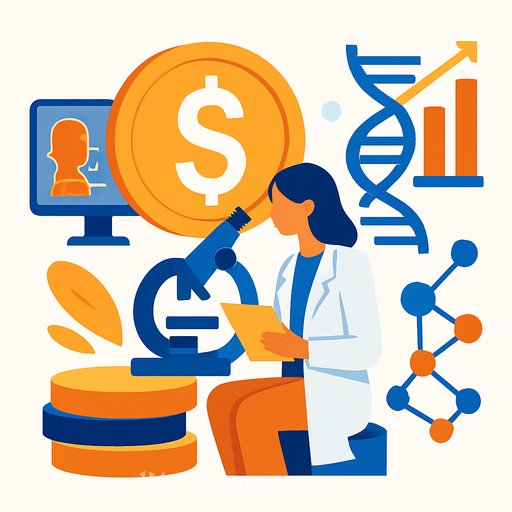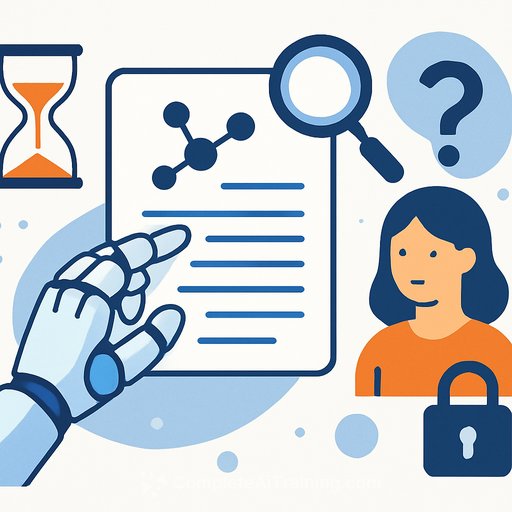Lila Sciences raises $235M and hits unicorn status: autonomous AI meets real-world labs
Lila Sciences has secured $235 million, pushing the Cambridge, MA startup past a $1 billion valuation. The company pairs advanced AI with autonomous robotic labs to shorten discovery cycles in drugs and materials. Investors include Collective Global and Braidwell LP, with prior backers such as the Abu Dhabi Investment Authority and General Catalyst returning.
The raise lands during a surge in capital for AI-led life sciences. Lila's pitch: a "scientific superintelligence" that can form hypotheses, run physical experiments, learn from results, and iterate-end to end.
What Lila is building
Founded with a $200 million seed from Flagship Pioneering, Lila is integrating large-scale AI models with fully automated labs. The system targets the bottlenecks that drain time and budgets: hypothesis generation, experiment design, execution, and data feedback.
- Closed-loop experimentation that learns and adapts in near real time
- Autonomous agents coordinating multi-step workflows across robotics and computation
- Applications spanning drug discovery and sustainable materials
CEO Geoffrey von Maltzahn and Chief Scientist George Church anchor the scientific and operational credibility. The company claims faster iteration and reduced cost per learning cycle compared with traditional R&D.
Funding details and momentum
The $235 million follows the earlier $200 million seed, bringing total funding close to half a billion dollars within a year. Reports indicate a Series A could exceed $300 million at a valuation north of $1 billion, suggesting the latest figures may be one part of a larger financing plan.
Industry observers on X (formerly Twitter) flagged the raise as a key moment for AI-first drug development. The capital will scale autonomous labs, expand compute, and recruit talent across AI, robotics, and wet lab operations.
Why this matters for R&D teams
- Shorter cycles: Hypothesize, test, and learn in compressed timelines with continuous data feedback.
- Broader search: Explore larger parameter spaces with systematic, automated experimentation.
- Cost focus: Push more experiments per dollar through automation and smarter design-of-experiments.
- Beyond pharma: Materials discovery for sustainability, including potential climate applications.
Competition and differentiation
Lila enters a crowded arena with players like Insitro and Recursion Pharmaceuticals advancing AI-guided discovery. Lila's differentiation is the full-stack emphasis on autonomy: AI models tightly coupled to physical labs for closed-loop learning at scale.
Regulatory and ethical pressure points
Any AI-derived therapeutic still has to clear FDA requirements for safety and efficacy. That means rigorous documentation, validated pipelines, and reproducible evidence throughout preclinical and clinical phases.
Risks include biased training data, overfitting to synthetic signals, and over-reliance on automation. Lila emphasizes human oversight; the bar will be proof that automated decisions translate into reliable biological outcomes.
For background on requirements from discovery to approval, see the FDA's overview of drug development here. For context on Lila's early backer, visit Flagship Pioneering.
Operational plan: where the money likely goes
- Scaling robotic labs with higher assay throughput and tighter software-hardware integration
- Compute and data infrastructure; potential partnerships with chipmakers for training and simulation
- Hiring across ML research, MLOps, lab automation, and multidisciplinary assay development
- Therapeutic and materials programs that can demonstrate clear technical and commercial milestones
Signals to watch in the next 6-12 months
- Disclosure of the full Series A structure and total capital committed
- Public demos or case studies showing closed-loop cycles outperforming standard lab workflows
- Partnerships with pharma, materials companies, or compute providers
- Early validation data: prospectively designed experiments with measurable gains in hit quality, cycle time, or cost
Practical next steps for science and research leaders
- Assess where autonomous loops fit: assay classes, data richness, and measurable endpoints
- Start small: pilot closed-loop workflows (e.g., Bayesian optimization for formulation or synthesis)
- Build the data spine: standardized schemas, versioning, metadata, and traceability across wet and dry labs
- Prep for compliance: model documentation, audit trails, and validation aligned to FDA expectations
- Team design: pair ML scientists with automation engineers and domain experts to avoid siloed development
If your team is upskilling for AI-driven lab workflows, explore role-based learning paths here.
Bottom line
Lila Sciences is betting that tightly integrated AI and robotics can compress discovery timelines and widen the search space across therapeutics and materials. With heavyweight investors, veteran leadership, and a clear focus on autonomy, the next phase will hinge on credible validation and partnerships that convert capital into reproducible scientific results.
Your membership also unlocks:






